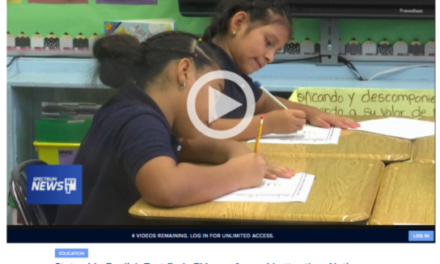Four practical ways to report on two recent Supreme Court cases
By Linda K. Wertheimer
For the last 60 years, the line has seemed clear when it comes to religion and public schools: teachers and other school officials cannot preach at or with students, and public education funding should not support religious schools .
Then in the course of less than a week, the U.S. Supreme Court rewrote the script, creating a confusing and challenging scenario for schools and the reporters who cover them.
The June 27th ruling in Kennedy v. Bremerton, a 6-3 decision in favor of a football coach’s prayer in Washington State, might result in tremendous changes at schools and continuing controversies. The court decided that Bremerton High School’s former assistant varsity football coach, Joe Kennedy, had the right to pray in public view of his team at mid-field right after each game.
The June 21st ruling on Carson V. Makin also ranks high as an education story. The 6-3 opinion overturned the state of Maine’s ban on funding to religious schools in its voucher program, which had provided private school tuition for children who did not have secondary schools in their community. The Court’s ruling said Maine’s policy of only allowing nonsectarian schools to receive funding discriminated against religious .
The decisions create enormous new questions for schools, and education journalists should be preparing right now to cover the stories that surely will arise at the local, regional and national levels.
The decisions create enormous new questions for schools, and education journalists should be preparing right now.
Religious minorities, including Jews, Sikhs, Hindus and Muslims, are often the invisible minorities in schools, and it is usually their rights – as well as that of atheists – that are endangered when public school prayer is allowed. And America’s religious demographics are changing. The proportion of Americans who identify as Christian has been on the decline, while the unaffiliated – commonly called the ‘nones’ – have been on the rise, according to the Pew Research Center. The percentage of people of other faiths besides Christianity, especially Hindus and Muslims, also has increased.
The coach’s prayer – like nearly every prayer involved in a church/state dispute in America – was a Christian prayer. In many church/state cases, just one family has been named on a complaint, and others were afraid to even be named. In Justice Sonia Sotomayor’s dissent in Kennedy v. Bremerton, she referred to the dilemma Kennedy created for students: “After the issues with Kennedy arose, several parents reached out to the District saying that their children had participated in Kennedy’s prayers solely to avoid separating themselves from the rest of the team. No BHS students appeared to pray on the field after Kennedy’s suspension.”
Both recent Supreme Court rulings support conservative Christian groups’ decades of pushing to bring prayer and religiosity more into the public sphere, including schools. How schools and communities respond to the recent rulings could be fodder for education stories for years to come. So is the pro-prayer movement itself.
How schools and communities respond to the recent rulings could be fodder for education stories for years to come.
Here are some suggestions to unravel the complexities of these topics:
- Start with a First Amendment crash course. The First Amendment’s Establishment Clause prohibits the state – substitute public school district for state – from establishing a religion. That means schools cannot promote religion. The First Amendment also says the state has to allow the free exercise of religion, meaning students and educators have the right to practice their faith. Those two parts of the First Amendment are often in conflict in schools because of the question of how educators could practice their religion in a public school setting and still respect students’ rights not to be subject to promotion of a religion. Educating students about world religions, for example, is fine. Preaching to them is not.
- Reporters can easily learn about decades-old case law on school prayer in the majority and dissenting opinions in recent cases. They also can read summaries of old cases at the Supreme Court website as well as on my go-to site, the Legal Information Institute. Develop a nuanced understanding of new rulings and learn to recognize church/state issues in school districts before they become court cases. Religious clubs for students, for example, are fine, as are after-school evangelical Christian programs, based on court rulings. But students cannot lead prayers over the loudspeakers at public school football games, the Supreme Court ruled in 2000. It’s a complicated landscape. Browse the resources of the Freedom Forum for more insight on past cases.
- When writing stories about religion and schools, remember the most affected groups. Christian prayer is typically the religious message that is done on public school grounds. Talk to clergy of various faiths to see if they can connect you to youths in the school system. Find those voices and help them be heard.
- Get to know the organizations handling church/state complaints, and those promoting the prayers in the first place. Some of the major players advocating for strict church/state separation include Americans United for Separation of Church and State; the ACLU; and the Freedom from Religion Foundation. Pro-prayer groups and law firms, which describe themselves as religious freedom advocates, include the Family Research Council, First Liberty Institute, and Liberty Counsel. Amicus briefs are great places to find a variety of sources – and the money trail of support on both sides.
If school district officials seem unsure how to handle prayer at sporting events after the Kennedy v. Bremerton ruling, Sotomayor gives a hint why in the dissent. She notes that the Court’s majority opinion “offers essentially no guidance for school administrators. How will school administrators exercise their responsibilities to manage school curriculum and events when the Court appears to elevate individuals’ rights to religious exercise above all else?”
No one will know what schools are doing unless reporters ask.
Linda K. Wertheimer, a Boston-area freelance journalist who writes frequently about church/state issues, is the author of Faith Ed, Teaching about Religion in an Age of Intolerance. Read her most recent article, about the 30-year-old graduation prayer ruling, Lee v. Weisman, in the Washington Post. Also, if you’re attending this year’s EWA conference , check out her Lightning Talk on covering clashes over religion in public schools. You can follow her on Twitter at @lindakwert.
ABOUT THE AUTHOR

The Grade
Launched in 2015, The Grade is a journalist-run effort to encourage high-quality coverage of K-12 education issues.














